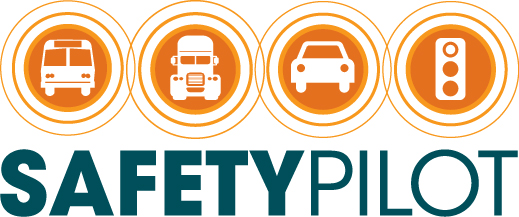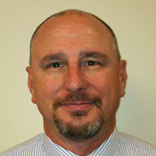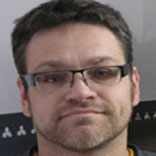| Date: December 15, 2011
Time: 1:00 PM – 2:30 PM ET
Cost: All T3 webinars are free of charge
PDH: 1.5 View PDH Policy

T3 Webinars are brought to you by the ITS Professional Capacity Building Program (ITS PCB) at the U.S. Department of Transportation’s (US DOT) ITS Joint Program Office, Research and Innovative Technology Administration (RITA). Reference in this webinar to any specific commercial products, processes, or services, or the use of any trade, firm or corporation name is for the information and convenience of the public, and does not constitute endorsement, recommendation, or favoring by U.S. Department of Transportation.
Description
This webinar will provide an overview of Adaptive Signal Control Technology (ASCT) and the efforts of the FHWA Every Day Counts initiative to mainstream the implementation of this technology. Agency professionals will discuss their recent experiences with adaptive signal control projects and how systems engineering was used as a tool to inform decisions that affect technology selection, system operation, and procurement options. The webinar will also discuss how to apply the FHWA Model Systems Engineering Documents for ASCT to these types of projects.
Background
The goal of the Every Day Counts ASCT initiative is to mainstream the use of adaptive control where traffic conditions and agency capability support its implementation. The Model Systems Engineering Documents for ASCT provide the agency practitioner already knowledgeable about traffic signal operation the means to develop systems engineering documents that comply with system engineering requirements (23CFR940.11) with a significantly reduced level of effort compared with traditional processes. In so doing, the risks of implementing systems inconsistent with an agency’s objectives and capabilities are greatly reduced.
These model documents and the associated guidance were developed by a team of traffic signal operations and systems engineering experts, with significant input from agency stakeholders, who have experience implementing ASCT in a variety of situations. Taken as a whole, this collection is the first of its kind, blending questions and potential responses to guide the reader through the selection of statements for a concept of operations and then linking requirements to those statements.
To engage in a national discussion about adaptive control or any aspect of traffic signal management, operation, or maintenance, join the National Transportation Operations Coalition (NTOC) Traffic Signal Library and User Forum by visiting https://ntoctsl.groupsite.com/.
Target Audience
Agencies involved in the management and operation of traffic signal systems.
Learning Objectives
- Describe the FHWA Every Day Counts, Adaptive Signal Control Technology initiative, including its goals and resources.
- Discuss the types of facilities and traffic conditions where adaptive signal control has potential to demonstrate benefits.
- Highlight agency experiences with the use of the Model Systems Engineering Documents for ASCT to implement projects.
- Describe the use of the Model Systems Engineering Documents for ASCT to inform the ASCT implementation process.
Additional ASCT Resources
Agenda
- Leo Almanzar & Hong Yuan, New Jersey Meadowlands Commission — Meadowlands Adaptive Signal System for Traffic Reduction (15 min)
- Cindy Shell & James Fritz Brogdon, Volkert & Associates, Inc. — Chattanooga Regional ITS/Adaptive Signal Control Technology State Route 153 (15 min)
- Richard Denney, FHWA Resource Center — FHWA Model Systems Engineering Documents for ASCT Systems (40 min)
- Questions (20 min)
Host
Paul Olson, P.E., PTOE, ITS Technology Specialist, FHWA Resource Center
With 30 years of experience, Mr. Olson is a widely known and respected expert on traffic signals and signal systems design and operation. In his current role with FHWA, he provides specialized technical support both to the FHWA headquarters and federal-aid field offices and partner state and local agencies, in addition to the ITS Joint Programs Office in the Research and Innovative Technology Administration.
Paul began his career with the Washington State Department of Transportation designing and operating traffic signals in the Northwest Region that includes the King and Snohomish County Metroplex. Prior to joining FWHA, he served as a consultant in the San Francisco Bay Area. During that engagement, Paul managed traffic signal timing optimization projects for the California jurisdictions of Concord, Pleasant Hill, Walnut Creek, Contra Costa County, and Caltrans.
Paul has had significant roles in the development of the Traffic Signal Timing Manual and the development of many National Highway Institute courses. He also had a significant role in the development of the Mobile Hands on Traffic Signal Timing Training. Paul is a Fellow of the Institute of Transportation Engineers and has been active for many years on the Transportation Research Board’s standing committees on Traffic Signal Systems. He holds a B.S. in civil engineering from Washington State University and a Certificate in Telecommunications Engineering from the University of California at Berkeley; a Professional Transportation Operations Engineer certification from the Institute of Transportation Engineers; and he holds registrations as a civil engineer in Washington, Oregon, California, Nevada, Arizona and registrations as a traffic engineer in California and Oregon.
Presenters
Leo Almanzar P.E., P.P., Senior Engineer, New Jersey Meadowlands Commission
Mr. Almanzar plays a critical role in transportation planning and traffic engineering initiatives for the Commission. He manages transportation reviews and calculation of transportation mitigation assessments for the Meadowlands Transportation Planning District. He is also design and construction project manager for multiple phases the Meadowlands Adaptive Signal System for Traffic Reduction (MASSTR) at 128 locations.
Leo’s career’s worth of experience in traffic engineering coupled with more than 3 years of adaptive signal control technology (ASCT) research and collaboration with adaptive system managers, communication, and detection providers have resulted in a comprehensive background in ATCS and related technologies. He recently designed the entire first phase of the project consisting of thirty traffic signals and prepared the Systems Engineering Analysis and Review Form for the project.
Leo is a graduate of the New Jersey Institute of Technology, where he earned bachelor and master degrees in civil engineering. He is also an adjunct professor of computer aided design at Passaic County Community College.
Hong Yuan, P.E., P.T.O.E , Senior Transportation Engineer, New Jersey Meadowlands Commission
Mrs. Yuan plays a critical role in transportation planning and traffic engineering initiatives for the Commission. There she manages transportation reviews and calculation of transportation mitigation assessments for the Meadowlands Transportation Planning District. She is also a project manager of design and construction for multiple phases of the Meadowlands Adaptive Signal System for Traffic Reduction (MASSTR).
Hong developed the technical specifications and played a critical role in preparing the procurement packages and the Systems Engineering Analysis for MASSTR. Her experience in transportation planning and traffic engineering coupled with more than 3 years of adaptive signal control technology (ASCT) research and collaboration with adaptive, communication, and detection providers have resulted in a comprehensive background in ATCS and related technologies.
Hong earned her bachelor degrees in civil engineering as well as economics from Tsinghua University, China; and her master degree in civil engineering from Georgia Institute of Technology. She is a registered PE in New Jersey and Maryland, and a PTOE since 2008.
Cindy Shell, Designer, Volkert & Associates, Inc.
 Mrs. Shell is currently a designer with Volkert & Associates, has been responsible for the design of numerous intersection and signal upgrade plans, signal timing plans, and traffic studies for both public and private sectors throughout the southeast. Her most recent experience includes the ITS project that will provide signal upgrades and transportation network improvements at 123 intersections located within the City of Chattanooga metropolitan area and will include the use of adaptive signal control technology (ASCT). Mrs. Shell is currently a designer with Volkert & Associates, has been responsible for the design of numerous intersection and signal upgrade plans, signal timing plans, and traffic studies for both public and private sectors throughout the southeast. Her most recent experience includes the ITS project that will provide signal upgrades and transportation network improvements at 123 intersections located within the City of Chattanooga metropolitan area and will include the use of adaptive signal control technology (ASCT).
Prior to coming to Volkert, Mrs. Shell worked 12 years for the Alabama Department of Transportation in the areas of Construction, Maintenance, and Administration. She holds a bachelors degree in biology from Auburn University and a masters degree in Counseling and Human Development from Troy State University.
James Fritz Brogdon, P.E., Project Manager, Volkert & Associates, Inc.
 Mr. Brogdon is currently a Project Manager with Volkert & Associates, Inc. He has been with the firm since 1997. He is responsible for developing ITS, roadway, lighting and traffic signal plan sets including design criteria, horizontal and vertical geometry, signing/striping, equipment specification, and detailed construction quantity estimates. Mr. Brogdon has extensive experience working in conjunction with multiple state departments of transportation on numerous ITS, roadway, lighting and traffic signal, and roadway projects. Mr. Brogdon is currently a Project Manager with Volkert & Associates, Inc. He has been with the firm since 1997. He is responsible for developing ITS, roadway, lighting and traffic signal plan sets including design criteria, horizontal and vertical geometry, signing/striping, equipment specification, and detailed construction quantity estimates. Mr. Brogdon has extensive experience working in conjunction with multiple state departments of transportation on numerous ITS, roadway, lighting and traffic signal, and roadway projects.
Mr. Brogdon earned his bachelor and master degree in Civil engineering from Tennessee Technological University. He is a registered PE in Tennessee, Arkansas and Illinois.
Richard W. Denney, Jr. P.E., Traffic Management Specialist, FHWA Resource Center
With 30 years of experience, Mr. Denney is a widely known and respected expert on traffic signals, ITS architecture and design, standards, and systems engineering for transportation management projects. Prior to joining the FHWA, Rick served as a consultant and led projects implementing systems engineering in the development of standards and also in the planning and development of a wide range of ITS projects. Rick also managed all types of ITS projects throughout the country, including signal systems, ITS systems engineering, communications plans, regional architectures, and dynamic message sign systems design and testing. He chairs the National Transportation Communications for ITS Protocol (NTCIP) Field Management Stations Working Group.
Rick began his career at the Texas Department of Transportation in the Freeway Operations Unit. He then served as the Traffic Signal Engineer for the City of Austin, and subsequently as the Traffic Management Engineer for the City of San Antonio, where he managed the planning, design, and operation of traffic signals and several large and small traffic signal system projects for a combined network of 1,100 traffic signals.
Rick holds a B.S. in civil engineering from Texas A&M University, and a M.S. in engineering from the University of Texas at Austin. He is widely published, and recently received the Transportation Research Board’s D. Grant Mickle Award for Outstanding Paper on Operations. |


 Mrs. Shell is currently a designer with Volkert & Associates, has been responsible for the design of numerous intersection and signal upgrade plans, signal timing plans, and traffic studies for both public and private sectors throughout the southeast. Her most recent experience includes the ITS project that will provide signal upgrades and transportation network improvements at 123 intersections located within the City of Chattanooga metropolitan area and will include the use of adaptive signal control technology (ASCT).
Mrs. Shell is currently a designer with Volkert & Associates, has been responsible for the design of numerous intersection and signal upgrade plans, signal timing plans, and traffic studies for both public and private sectors throughout the southeast. Her most recent experience includes the ITS project that will provide signal upgrades and transportation network improvements at 123 intersections located within the City of Chattanooga metropolitan area and will include the use of adaptive signal control technology (ASCT). Mr. Brogdon is currently a Project Manager with Volkert & Associates, Inc. He has been with the firm since 1997. He is responsible for developing ITS, roadway, lighting and traffic signal plan sets including design criteria, horizontal and vertical geometry, signing/striping, equipment specification, and detailed construction quantity estimates. Mr. Brogdon has extensive experience working in conjunction with multiple state departments of transportation on numerous ITS, roadway, lighting and traffic signal, and roadway projects.
Mr. Brogdon is currently a Project Manager with Volkert & Associates, Inc. He has been with the firm since 1997. He is responsible for developing ITS, roadway, lighting and traffic signal plan sets including design criteria, horizontal and vertical geometry, signing/striping, equipment specification, and detailed construction quantity estimates. Mr. Brogdon has extensive experience working in conjunction with multiple state departments of transportation on numerous ITS, roadway, lighting and traffic signal, and roadway projects.


